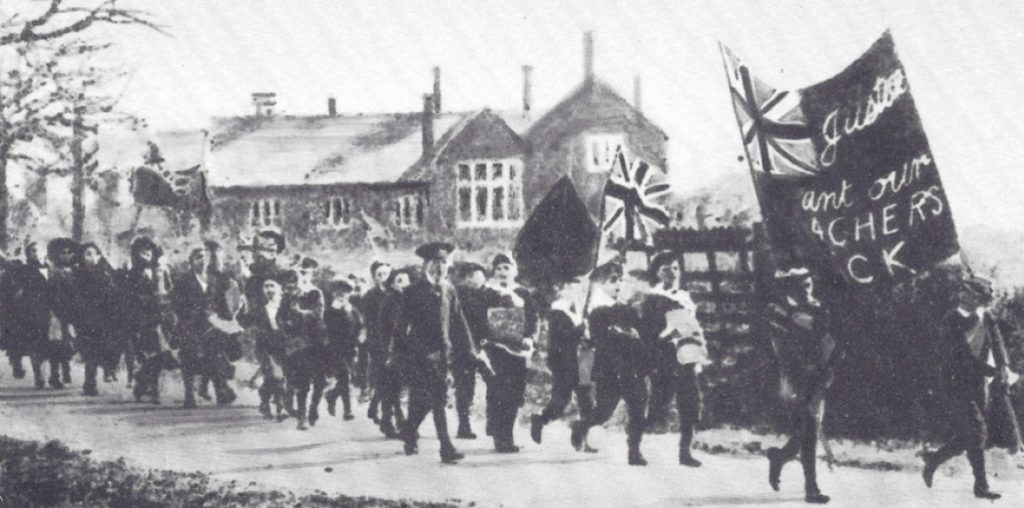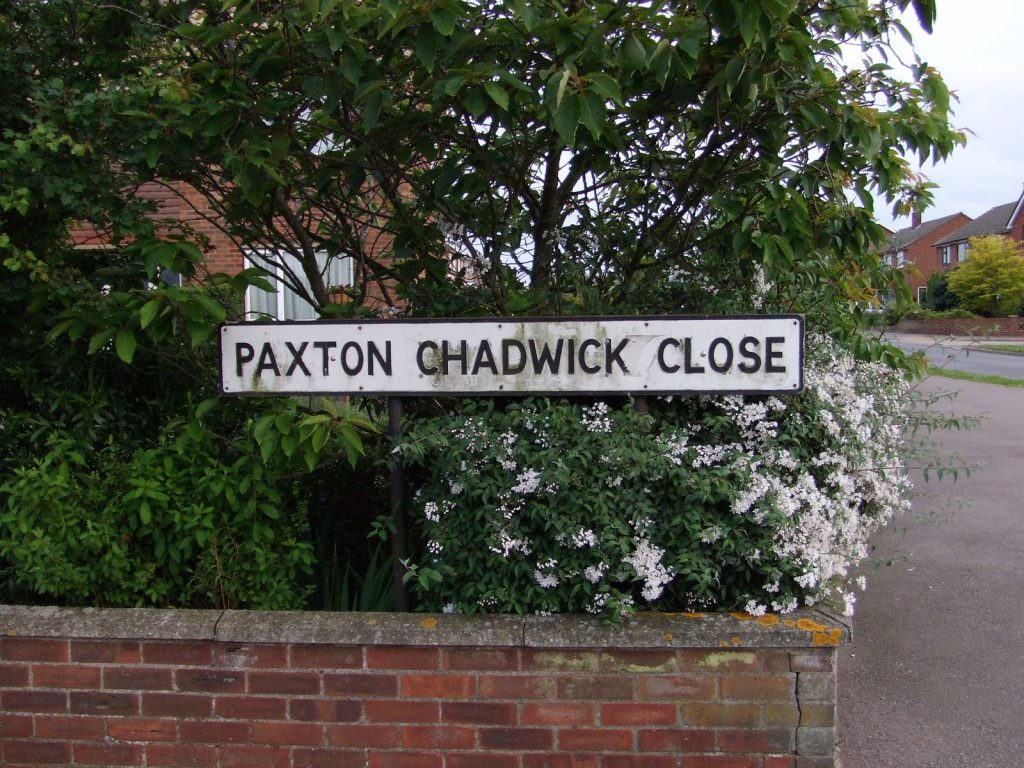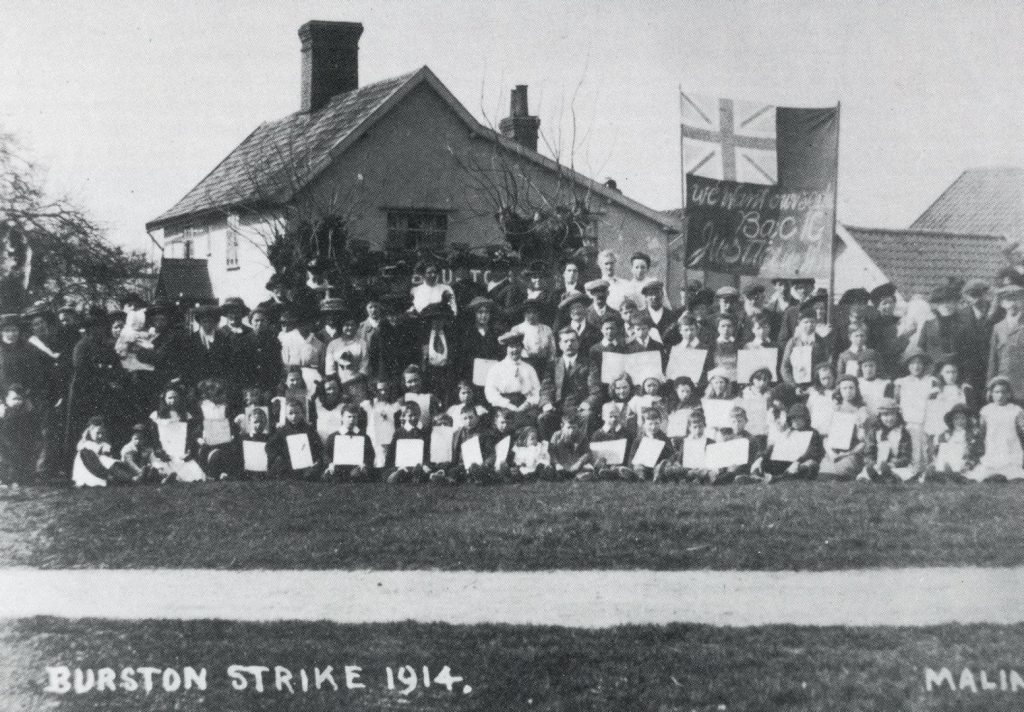In the wake of fundamental changes in the Labour Party leadership since Jeremy Corbyn stepped down, and during the worldwide COVID-19 crisis where vast wealth inequality has been brought undeniably to the surface of everyday life, membership to the Communist Party and the YCL have surged.
This has led to new branches springing up all over the country, including the formation of the Young Communist League – East of England branch, founded last week on Thursday 21 May. It has been a number of years since the East of England has had an organised presence of socialist youth, but they follow in the footsteps of many revolutionary actions and historic events which have taken place throughout the rural east.
The Burston School Strike
One such event was in the village of Burston, Norfolk between the years of 1914-1939, and is known as The Longest Strike in History. Here socialists Tom & Annie Higdon took up teaching positions at the local school, where they fought for better conditions both within the school itself and for the wider rural community, against much opposition from people within the local Parish Council and the Norfolk Education Authority. After 3 years of struggle, an inquiry took place and they were both dismissed from their posts on 1 April 1914. But as authorities were taking over, the sound of children marching and singing could be heard from the distance.
Of the school’s seventy-two pupils, sixty-six had come out on strike in support of their teachers, marching around the village carrying large handmade signs over their heads, with slogans such as “We Want Our Teachers Back” and “Justice We Want”, and with it began a boycott of the local authority school which lasted for the next twenty-five years. Instead, the Higdon’s formed an alternative school where they taught the pupils lessons on the village green, where it was well equipped, maintained a full timetable and observed registrations with the full support of children’s parents. These parents subsequently suffered repressions in the form of fines, sackings from farm labour work, and evictions from any land which they rented from the rector – with their crops and property on the land destroyed.
But in spite of this, the strike continued with lessons taking place in empty workshops when not outside, until 1917 when with the financial support of miners’ and railway workers’ unions, Trades councils, Independent Labour Party branches and Co-operative Societies, a permanent school was built, and on 13 May 1917 the Burston Strike School was officially opened. Teaching at the Strike School continued for quite a number of years, only ending in 1939 after Tom Higdon had passed away and Annie was unable to carry it on alone. Since then the school was awarded charitable status and turned into a museum remembering the strike and archiving the village’s history. In 1984 the village played host to a commemoration celebrating the 70th anniversary of the strike seeing a large gathering of the British labour movement, as well as a march around the village, which has taken place there annually ever since.

Suffolk’s ‘Little Moscow’
Other lesser known events include that which occurred in the small industrial town of Leiston, on the east coast of rural Suffolk, becoming known as “Suffolks Little Moscow”. It was here in 1933 that a once politically apathetic community started a remarkable transformation towards radical politics and union activity. Garrett’s Engineering Works dominated the towns employment, which meant that during the great economic depression of the 1930’s the entire town suffered from vast unemployment and poverty, with Garrett’s even shutting down for a short period of time in 1932. But also calling Leiston its home was A.S. Neill’s Summerhill School, one of the most well known alternative ‘free’ schools in the world still existing today, and it was here where the artist Paxton Chadwick met both Vivien Jackson and Max Morton, while teaching at the school.
Not all who taught at Summerhill had radical politics, but with Vivien being the daughter of Communist Party founding member T.A. Jackson, and Max the brother of Leslie Morton (later author of ‘A People’s History of England’), Paxton was in good company and soon together they formed the Leiston Communist Party. One of their first actions took place in February 1934 when they organised for the Norwich to London Hunger March, one of many in protest of the Great Depression and mass unemployment, to pass through the town attracting a gathering of over a thousand people in support of it. This subsequently resulted in a new branch of the National Unemployed Workers Union being formed, and a sharp awakening of class consciousness among the local townspeople had begun.
From 1935 the Leiston Communist Party threw itself into “Popular Front” work with the local left of the Labour Party, where they managed to defeat the well entrenched Conservative majority on the local council. This unity continued for many years, and together they produced their own radical publication the ‘Leiston Leader’ with a circulation of 300-500 copies, and raising aid together for a variety of causes, but most importantly for the Spanish Civil War. The Spanish Medical Aid Committee was formed in 1937, and that November a number of prominent speakers came to Leiston for a fundraising event, including a visit from an ambulance on its way to the front lines in Spain, yet again seeing a very large gathering of people in the town square.
Paxton himself became the first Communist Councillor in Suffolk in 1938, fighting the Tories for the construction of council houses just prior to the outbreak of WW2, and upon his return he became Chairman of the council continuing his fight for private landlords to observe health regulations and to prevent them from charging excessive rent. During WW2 an influx of women workers took up jobs at Garrett’s Engineering Works, including that of Vivien Jackson and Paxton’s wife Lee Chadwick. With their help the factory became unionised for the first time in its history, in spite of the efforts of its founder Richard Garrett who was strongly anti-union.
After the war ended, Labour made considerable gains across both Suffolk and Norfolk, and over most of East Anglian there was an “unofficial” Labour-Communist amity. As a result, Lee became the first Communist County Councillor in East Anglia followed by a number of others joining her shortly after, with eventually more Communist Councillors returning than that of Labour.
Despite the increase in anti-Soviet attitudes after the war, Leiston remained loyal to the labour movement which had helped it, returning Communist Councillors up until the 1980’s and producing issues of the Leiston Leader into the 1990’s. Their legacy lives on through the people they fought for, and the lives they helped to change. The relation of the town to industrial work may have ceased over the years, with Garrett’s now a museum, but the people of Leiston remember. And if you were to visit the town now you’ll find one of the very few roads in Britain named after a communist, that of ‘Paxton Chadwick Close’.

A future to win
Burston and Leiston are but two places in the entirety of East Anglia which have each played their roles in bettering both the education and the labour conditions of the working people who reside in them. They have each shown unity as a community, received solidarity from others, and shown solidarity to other struggles around the world. There is no doubt in the wealth of other radical activity which has taken place in the region, including that of the Communist Party in Cambridge with individuals such as John Cornford & David Guest who gave their lives fighting in Spain, and very much deserving of a whole article themselves.
But in remembering this history, we also learn from it as we join other revolutionary young people throughout Britain as part of the mass movement of struggles against the capitalist ruling class, and for a better future – in communities, work, schools and universities.
We look forward in the East of England to playing our part in the history of tomorrow, in building a better future for us all!
Joe Weaver, is a Social Media Officer of the YCL’s new East of England Branch



